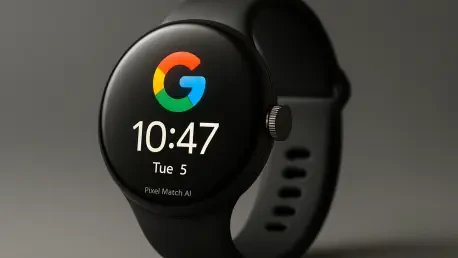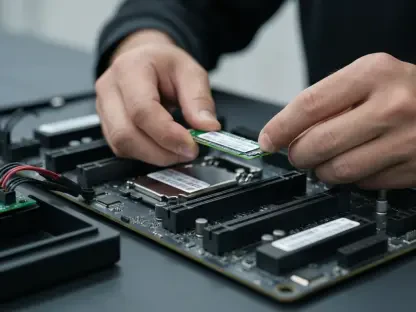I’m thrilled to sit down with Oscar Vail, a renowned technology expert whose insights into emerging fields like quantum computing, robotics, and open-source projects have shaped industry conversations. With a finger on the pulse of innovation, Oscar brings a unique perspective to the rapidly evolving world of smartwatches. Today, we’re diving into the groundbreaking features of the Pixel Watch 4, its competition with the Apple Watch, and how advancements like AI and battery life are redefining what we expect from wearable tech. Let’s explore how this device is changing the game.
Can you walk us through what sets the Pixel Watch 4 apart in the crowded smartwatch market?
Absolutely. The Pixel Watch 4 stands out due to its incredible balance of design, performance, and user-focused features. It comes in both 41mm and 45mm sizes, catering to different wrist sizes and style preferences, with a sleek, modern look that feels both premium and approachable. Beyond aesthetics, its battery life and AI capabilities are where it really shines. The integration of advanced hardware and software, like the dual-chip architecture, pushes efficiency to new heights, while the personal AI coach offers something genuinely useful for everyday users. It’s not just a gadget; it’s a companion.
How do you think the design of the Pixel Watch 4 appeals to a wide range of users?
The design is a huge win for versatility. The 41mm size is perfect for those who prefer a more subtle, lightweight watch—think people with smaller wrists or those who want something less obtrusive for daily wear. On the other hand, the 45mm model offers a bolder presence with a larger display, which is great for users who prioritize screen real estate for fitness stats or notifications. Both maintain a minimalist, elegant vibe that works whether you’re in the gym or at a business meeting. It’s clear Google put thought into making this watch adaptable to different lifestyles.
Let’s dive into the battery life of the Pixel Watch 4. What’s so impressive about it?
The battery life is a standout feature, no question. With the 45mm model, Google claims up to 40 hours with the always-on display and even 3 days in Power Saver Mode. That’s a massive leap forward compared to many competitors. The secret sauce is the dual-chip architecture, combining the Snapdragon W5 Gen 2 with an ML-powered co-processor. This setup allows the watch to run 25% faster while using half the power, which means you’re not constantly tethered to a charger. It’s a practical improvement that changes how you interact with the device daily.
Speaking of charging, how does the fast-charging capability impact the user experience?
The fast charging on the Pixel Watch 4 is a game-changer. Getting 50% battery in just 15 minutes means you can top up during a quick coffee break and have enough juice for a full day. Compared to other smartwatches where you might wait 30 or 40 minutes for a meaningful charge, this feels effortless. It eliminates that nagging worry of forgetting to charge overnight—especially for users who wear their watch to track sleep. It’s one of those small but impactful features that makes life easier.
How does the Pixel Watch 4’s battery life compare to the Apple Watch, and what does this mean for users?
When you stack it up against the Apple Watch, particularly the Series 10, the difference is stark. The Apple Watch gets about 18 hours of regular use or 36 hours in Low Power Mode, while the Pixel Watch 4 offers 40 hours in standard mode. That means even Apple’s low-power setting can’t keep up with Google’s regular performance. For Apple users who rely on their watch for constant health tracking or notifications, this could be frustrating. It might force more frequent charging or limit how much they use certain features, which isn’t ideal for a premium device.
Let’s talk about the personal AI coach on the Pixel Watch 4. How does this feature transform the fitness experience?
The AI coach is honestly one of the most exciting innovations I’ve seen in wearables. It acts like a personal trainer on your wrist, using data from your sleep patterns, workout intensity, and even idle time to create tailored fitness plans. You start by chatting about your goals—whether it’s running a marathon or just staying active—and it builds a detailed program with weekly targets. What’s brilliant is how it adapts in real time. If you had a rough night’s sleep, it might suggest a rest day instead of a tough workout. It’s proactive and intuitive in a way most fitness apps aren’t.
How does the real-time adaptability of the AI coach compare to other smartwatches or fitness services?
Most other smartwatches or apps, including those tied to premium subscriptions, offer static plans. They don’t adjust on the fly based on your current state. With many competitors, if life throws a curveball—like an injury or travel—you’re stuck manually tweaking things or ignoring the app’s outdated advice. The Pixel Watch 4’s AI, on the other hand, listens to your input and data, recalibrating instantly. Plus, you’re not shelling out extra for a subscription to access this level of personalization. It’s a refreshing, user-first approach that feels ahead of the curve.
What’s your forecast for the future of AI-driven features in smartwatches like the Pixel Watch 4?
I think we’re just scratching the surface with AI in wearables. Over the next few years, I expect these devices to become even more predictive and integrated into our lives. Imagine a smartwatch that not only adjusts your workout based on sleep but also syncs with your calendar to suggest the best times for exercise or reminds you to hydrate based on weather data. The Pixel Watch 4’s AI coach is a strong starting point, but as machine learning gets more sophisticated, we’ll see wearables evolve into true health and lifestyle partners. The potential for personalization is endless, and I’m excited to see where it leads.









